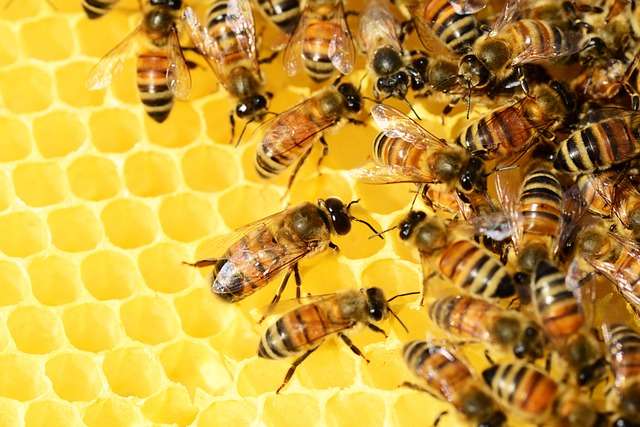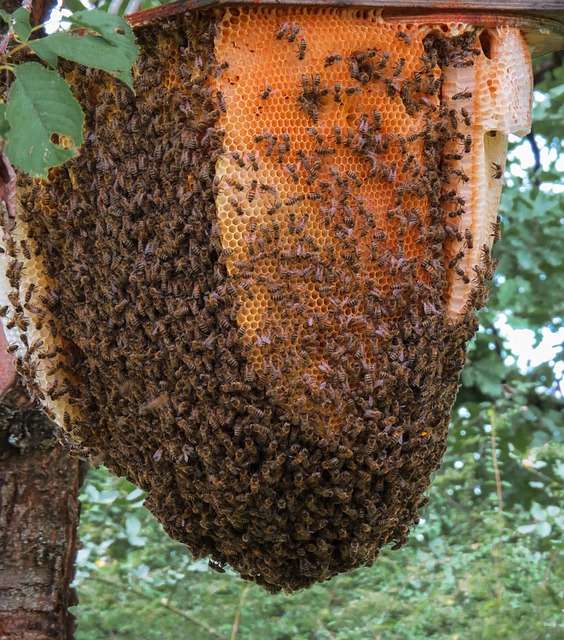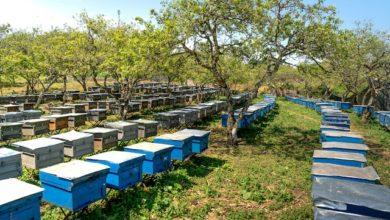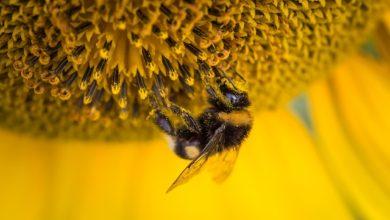Do honey bees have antennae?

Honey bees are insects, and they share five traits with other insects in general. An exoskeleton, which is their tough exterior, is present. They have a three-part body: a head, a thorax, and an abdomen. On top of their heads, they have a pair of antennas.
Long, graceful, mobile, and extremely useful is the bee antenna. Beyond that, though, a bee’s antennae, which have touch, taste, and smell sensors, are its primary data-gathering organ. In addition to gravity and wind speed, antennae can also pick up on variables like temperature, humidity, and carbon dioxide. Those two delicate threads carry a significant portion of a bee’s “knowledge.”
The Latin word antemna is where the name antenna comes from. An antemna was a sort of horizontal mast-mounted spar used on Roman sailing ships to spread square-rigged sails. You might be able to picture your bees with rigging if you use a little imagination.
Centralized data collection
The function and complexity of antennas are not just important to honey bees. All species of bees have comparable antennae that gather the data required for survival.
However, because eusocial bees, or bees that live in sociable groups, require more information than solitary bees, gathering their data is more difficult. They require information about food supplies, weather patterns, and mates, as well as ways to interact with other colony members.
Social bees have receptors that can detect queen pheromones, behavioral pheromones, and substances that can change the social organization of the entire colony.
Basic antenna structure

All bees have antennae that are essentially the same. Each antenna’s base rests in a depression in the bee’s head that resembles a bowl; this depression is frequently referred to as the antenna! socket. Movement of the antenna is regulated by four muscles that protrude from the antenna base into the bee’s head.
Three primary components make up the antenna itself. The first section is known as the scape and it protrudes from the antenna socket. The antenna’s single longest segment is this one.
The pedicel, a much smaller and more rounded section that is attached to the distal end of the scape, is visible. The antenna’s motion is caused by these two sections working together. A junction that resembles an elbow and allows for easy rotation in several directions is created when the pedicel fits within the end of the scape. A bent antenna can be seen between the scape and the pedicel if you see a bee with its antenna flexed.
The flagellum is the antenna’s third significant component. Because it is frequently used to identify bee sex, the flagellum is particularly intriguing to bee taxonomists. Flagomeres are tiny segments that make up the flagellum.
Almost all species, including the honey bee, have ten flagomeres for females and eleven for males. In some species, such as long-horned bees, the male has an antenna that is visibly longer than the female because his sub-segments are significantly longer.
The sensory receptors
A variety of receptor types, each with a unique function, cover the flagellum’s outside surface. Recognizable by their shape, the receptors are frequently referred to as plates, pits, pegs, and hairs.
In general, sensory hairs are utilized for tactile sensations, plate organs are used for both chemo- and photoreceptor activities and peg organs are used for smelling. The number of chemoreceptors in a worker antenna varies, but they average around 3,000, compared to 1,600 in a queen antenna.
Drones, however, have an estimated 300,000 chemoreceptors and their mission is to locate virgin queens in midair.
There is a highly definite pattern to the placement of sensors on the antennae. A tuft of sensory hairs, for instance, located at the very tip of the flagellum, is used by the honey bee to detect surface roughness.
The final six sub-segments of the worker’s antennae are home to temperature sensors, while the final eight sub-segments are where most of the olfactory sensors, known as pore plates, are located.
The much smaller number of gustatory sensors are thread-like chemoreceptors with a pore at the end that can detect sugar concentrations as low as one to two percent. Pheromones, humidity, carbon dioxide, gravity, and other well-understood sensors can all be used to measure these things.
There is a nerve inside the antenna that connects the receptors to the antenna lobe of the brain. Two more muscles that pull the flagellum up and down are also present, but they are separate from the ones in the scape.
Through tiny tracheal tubes and hemolymph transported by the bee’s circulatory system, the nerve and antenna muscles acquire oxygen. One auxiliary hemolymph pump is located at the base of each antenna since the antennae are so crucial to the functioning of the organ.
The Johnston’s organ
At the base of the flagellum, inside the pedicel, is another receptor known as Johnston’s organ. This sensor can detect vibrations and minute adjustments to the location of the antenna. For instance, a bee can gauge her airspeed while flying by observing how the antenna bends as a result of wind.
Additionally, Johnston’s organ is what enables the bee to “understand” dance language even in the dark. It functions in this way. Sound waves are propagated through the air by the dancing bee.
A “listening” bee’s flagellum is redirected and vibrated by these waves. The pedicel, which divides the pedicel from the scape, receives the vibrations from the flagellum, which then bounces them into a tight membrane. This membrane between the segments can be compared to an eardrum.
The pedicel’s sensory cells are stimulated as it vibrates, and those stimulated cells subsequently release nerve impulses that are sent to the bee’s brain.
The Johnston’s organ is frequently referred to as the “bee’s ear” since it can detect sound vibrations. But unlike a regular ear, the Johnston’s organ has the ability to pick up on incredibly minute deflections, like those brought on by magnetic and electric fields.
How bees use their antennae
The antennae of bees are constantly reaching, bending, touching, and seeking. An apparently never-ending stream of environmental information enters the bee’s brain thanks to its abundance of diverse sensors.
FAQ
What type of antennae do honeybees have?
The segmented antennae are crucial sensing organs of honey bees. Since the bases of the antennae are positioned in tiny socket-like regions on the head, they can move freely. In order to handle all of the essential sensory input, a big twin nerve connects each antenna to the brain.
Honey bees are insects, and they share five traits with other insects in general. An exoskeleton, which is their tough exterior, is present. They have a three-part body: a head, a thorax, and an abdomen. On top of their heads, they have a pair of antennas.
How many antennae do honeybees have?
The reason bees have two antennae has to do with their capacity to smell sugar. Although a solitary bee would make for an odd-looking hive, it serves more than simply aesthetic purposes.
What are bees’ antennae called?
Flagomeres are tiny segments that make up the flagellum. Almost all species, including the honey bee, have ten flagomeres for females and eleven for males. In some species, such as long-horned bees, the male has an antenna that is visibly longer than the female because his sub-segments are significantly longer.

What can a honey bees antennae do?
On the other hand, a bee antenna is long, lovely, mobile, and ridiculously adorable. Beyond that, though, a bee’s antennae, which have touch, taste, and smell sensors, are its primary data-gathering organ. In addition to gravity and wind speed, antennae can also pick up on variables like temperature, humidity, and carbon dioxide.
Do female bees have antennae?
A honey bee’s head is covered in antennae, which serve as a sensory powerhouse for the bee’s senses of touch, smell, taste, and even a special kind of hearing. It is odd that each antenna in males has 13 segments, whereas those in females have 12.
Why do bees wipe their antennae?
Each antenna is cleaned by the bee by dragging it through the bristles to remove any particles that could potentially obstruct the various sensory organs inside the antenna, such as pollen or dust.
Do bees communicate with their antennae?
Through contact, bees communicate with one another using their antennae. It is interesting to note that honeybees communicate mostly with their right antennae. Scientists are baffled by the preference displayed for the right antennae.




